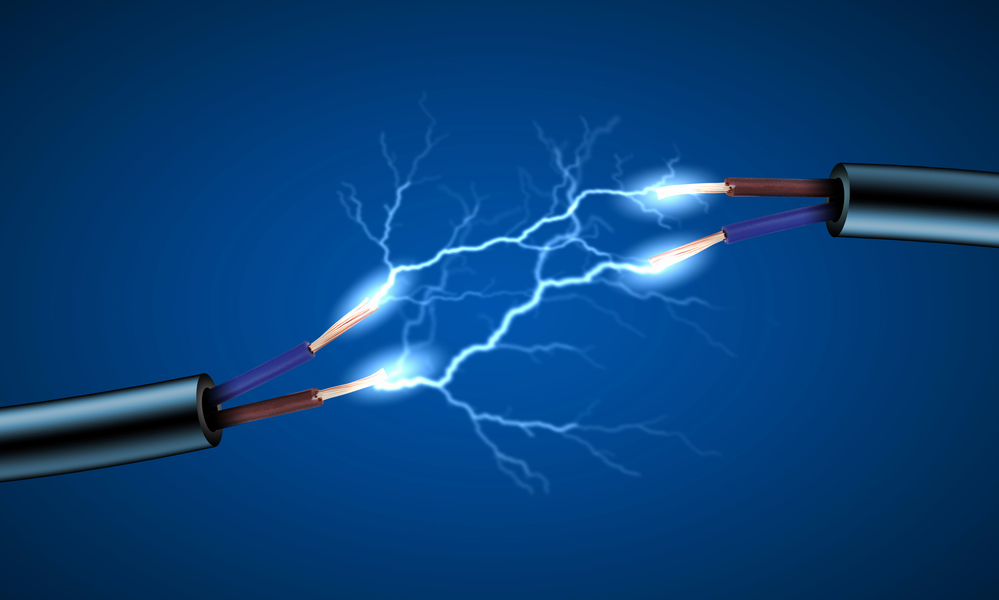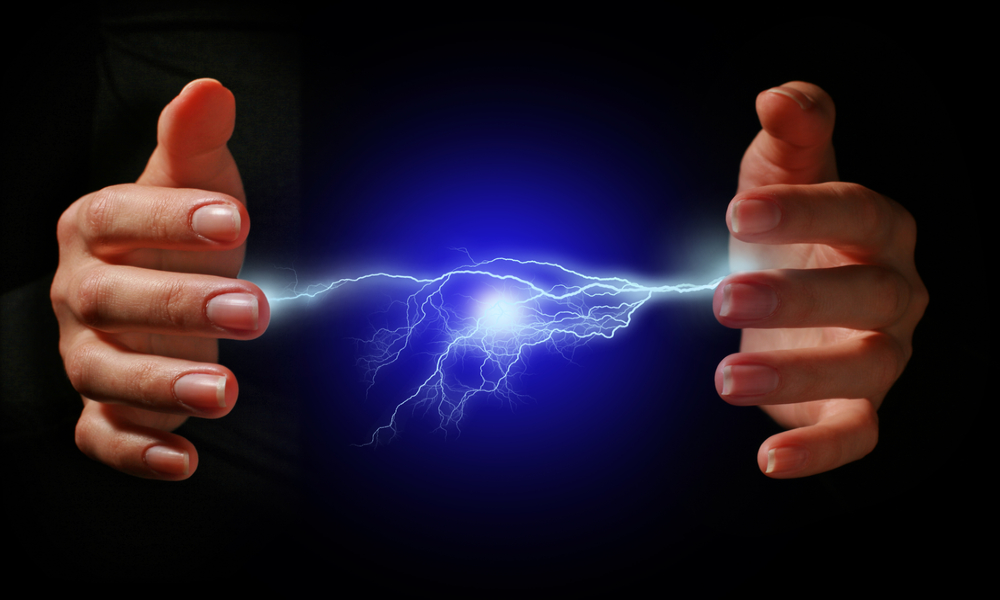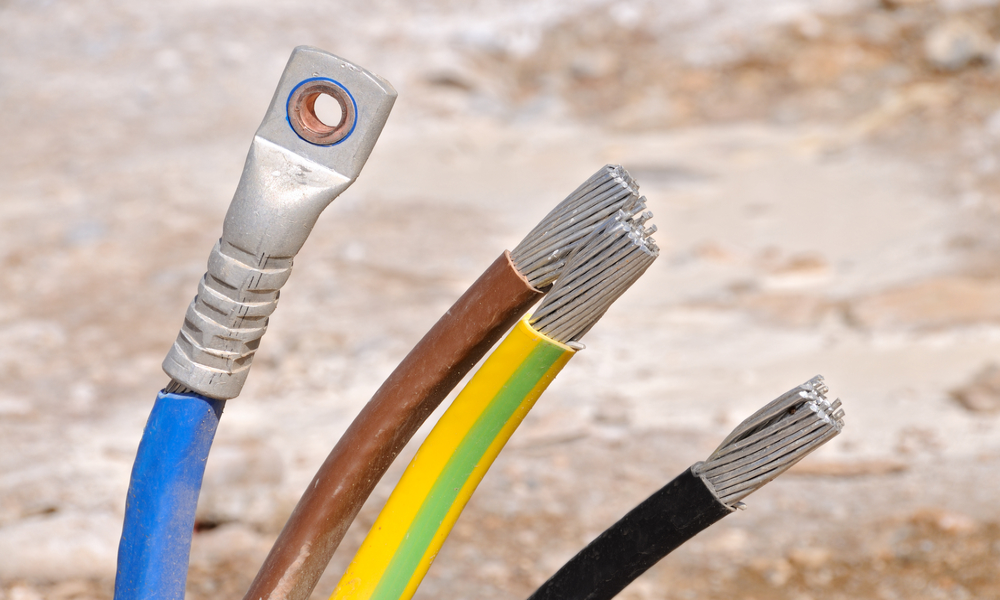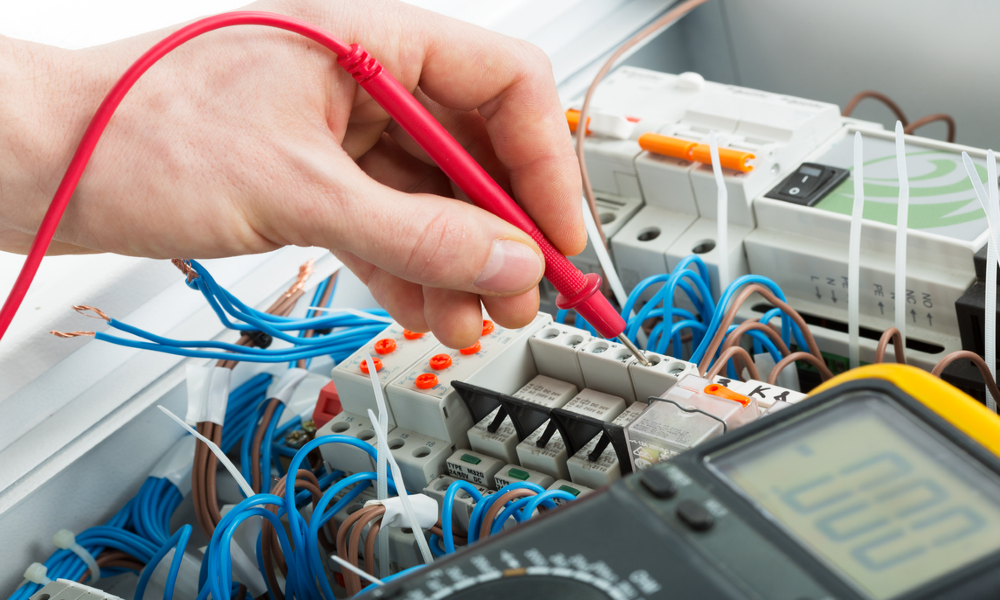Electricity for Beginners

Electricity is everywhere. Even before the dawning of modern technology, protons, neutrons, and electrons have interacted in nature to create electrical energy. Thunderstorms are perfect examples of this process.
We’ve become so dependent on electrical power that our world will come to a standstill if the flow of electricity ceases. That’s not surprising considering that most things that make our lives more comfortable and convenient need an energy source to operate. Our electronics, appliances, the lights in our home all run on electricity.
Let’s explore the process to find out how those protons, neutrons, and electrons come together to form an electrical current that we can use for our homes and businesses.
What is Electricity?
Simply put, electricity is the flow of electric charge, and this flow is called a current. It is considered a secondary energy source, meaning that producing it requires another power supplier. Some of these suppliers are coal, oil, and natural gas, which are classified as primary energy sources.
To generate electrical energy, electrons need to flow through an object called a conductor. Metals such as copper or aluminum are good conductors, allowing the electrons to move quickly through them. Surrounding the conductors with insulators (or materials where electricity can’t flow freely) forces the electrons to move only in one direction. By controlling the direction where the electrons go, they can be used to power anything from a light bulb to an electric car.
There are two forms this energy source can take, and by examining them, we get closer to understanding how electricity works. Two Types Of Electricity
There are two forms this energy source can take and by examining them, we get closer to understanding how electricity works.

Static Electricity
Static electricity occurs when electrical charges accumulate within or on the surface of a material. It is usually caused by friction, such as when you rub two different materials. Before they rub against each other, the two materials will have a neutral electric charge. That means that they have an equal number of positively charged and negatively charged subatomic particles.
The subatomic particle with a positive charge is called a proton, while the one with a negative charge is called an electron.
After applying friction between the two materials, one object loses electrons and becomes more positively charged while the other gains electrons and becomes more negatively charged.
Because of the static electricity build-up, the materials may adhere to each other, and in some cases, sparks may even jump from one to the other. The electric charge remains until it is released either through an electrical or static discharge or electric current.
One classic example of static discharge is lightning, which occurs due to a build-up of static electricity inside a storm cloud.
The lightning flash packs a lot of power. If it’s harnessed, there’s enough energy in a typical flash to keep a light bulb burning for around three months.
Current Electricity
If the build-up of an electrical charge causes static electricity, current electricity happens because of the flow of electrons. Whereas the electric charges build up and remain at rest in static electricity, the charges are constantly in motion with current electricity.
The term current electricity aptly describes the way electrons move. The negatively charged electrons flow through a conductor in one direction, like a river current. In a river, the rate that the water moves from one spot to another is the speed of the current. Meanwhile, with electricity, current measures the amount of electric charge that’s transferred over a period of time across an electrical field. The conductor where the electrons move from atom to atom usually comes in the form of wires.
One of the results of the current flow is the heating of a conductor, which becomes a source of energy. An excellent example of this process is the heating of a stove brought about by the flow of electrical current.
Electricity Movement
To understand how electricity works, we first need to get an idea of how it moves. It all starts with atoms, which are the building blocks of the universe. This means that everything around us, including electricity, is composed of these minuscule objects.
Atoms are the smallest part of matter, but they are still broken down into three smaller parts: electrons, protons, and neutrons. Electrons contain a negative charge; protons have a positive charge, and neutrons contain a neutral charge.
The electrons in the shell closest to the nucleus are strongly attracted to the protons. But sometimes, those in the outermost shells do not carry the same strong attraction. As a result, these electrons can be pushed out of orbit. The application of an external force can cause the said electrons to move from atom to atom. This flow of electrons from one atom to another is called an electric current.
What are Electric Circuits?
Electricity flows in a closed-loop, called an electric circuit. It must have a complete path where the electrons can move. The on-off button, or the switch, of electronic devices, opens or closes the circuit. Turning the switch on opens the circuit, while flipping it off closes the loop and creates a path where electricity can travel.
To illustrate this concept, let’s take a look at a light switch. At the off position, the electrical circuit is open, so no electricity flows. Pushing it to the on position allows the current to travel through a wire in the bulb. As a result, the wire gets hot, which makes the lightbulb glow.
That’s how electricity works.
Direct Current
In this form of current, the flow of the electrons is unidirectional, or they move only in one particular direction. The amount of electric current may change, but it will always move in a linear pattern.
One typical producer of direct current (DC) is a battery, where the electrons move from the negative terminal of the battery to the positive one. Other examples of power sources that generate DC are solar cells and fuel cells.
DC power is more consistent when it comes to voltage delivery. For example, if a DC power source generates 1.5 volts of electricity, it will always produce 1.5 volts. Batteries may lose power over time, but the voltage they provide remains the same until they completely run out of juice.
When it comes to applications, DC is used in all electrical devices that work with batteries.
Alternating Current
If DC power moves in just one direction, with alternating current (AC), the electrons move back and forth, with the electron flow reversing direction multiple times per second. In the US, the electric current alternates or changes direction at 60 hertz, or 60 times per second.
AC is the form of electric current produced by most power plants and distributed by power utilities. This is the type of electricity used in homes and businesses, with the electric current coming from the power sockets and is supplied by the utility grid.
One of the biggest advantages of alternating electric current is that modifying its voltage is relatively easy. The electricity that power plants generate comes in dangerously high voltages. Thus, the voltage needs to be changed before it’s ready for domestic and commercial consumption. Reducing or bringing down the voltage of this electric current is more straightforward than doing the same thing to direct electric current.
Electrical Conductance

Electrical conductance indicates the ease with which electricity runs through materials, whether metal or nonmetal. The International System of Units of conductance is siemens (S), formerly known as mho.
It’s the opposite of resistance (R), which signifies the amount of friction a material presents to the flow of electric current.
Conductors
Conductors are materials that allow the free flow of electrons through them. That means they let the electric charge pass unhindered. Most metals are good conductors. That’s because they have free electrons or electrons that are loosely bound and thus can move freely from one atom to another through the material.
The conductors are usually in the form of wires, and examples of metals that let electricity flow unhampered are silver, copper, bronze, and gold.
Insulators
In contrast to conductors that let electrons flow easily, insulators provide great resistance to the flow of electric current. That’s because the atoms of these objects have tightly bound electrons that don’t move freely over the material. As a result, the electric current can’t readily pass through.
The insulator prevents the conductive object from being transferred to its surroundings, thus preventing current loss. In addition, insulators make the electric current move more efficiently by giving direction to the flow of electrons through the conductive path.
Electromagnetism
Electricity and magnetism make up electromagnetism, which is a fundamental force in nature. One excellent example of electromagnetism at work is a giant electromagnet, where the attractive force can be turned on and off using electricity. With the flow of electricity, the giant piece of steel becomes a magnet, but the attractive force ceases when the current is switched off.
But how does electricity work to magnetize a piece of steel? Well, when electricity runs through a wire, the interaction of electrically charged particles and uncharged magnetic force fields with electrical conductors creates an electromagnetic field and turns the steel object into a magnet.
Electricity: Units of Measurement

Voltages (V)
Voltage is a unit of measurement for the force that causes the electricity to flow across a wire. The larger the voltage, the greater the current flow.
Current (A)
Meanwhile, current indicates the number of electrons that flow through a circuit. The unit of measurement is the Ampere (A), and one ampere presents one coulomb of electrical charge moving in one second.
Power (W)
The combination of voltage and current will give you electrical power, which indicates the amount of energy transferred in a set amount of time. Watts (W) is the unit of measure of power.
Energy (kWh)
Energy is defined as the ability to do work. When it comes to electricity, it relates to power, which measures the amount of energy electrical appliances or devices use and kilowatt-hour (kWh) is its unit of measure.
How is Electricity Generated?
The US employs various technologies and uses different energy sources to produce electricity. Over time, these technologies and sources keep changing and some become more widely accepted than others.
At present, the major sources of energy for power generation are the following:
Nonrenewable Energy Source
When we say non-renewable energy sources, we are talking about fossil fuels, which are traditional energy sources.
- Natural gas: This was the primary source of energy for power generation in 2020 as it supplied 34% of the country’s power needs. To generate electricity, this fossil fuel is burned in a boiler to produce steam, which then turns a turbine that produces electric power. Alternatively, gas turbines can also be used.
- Coal: This power source covered around 19% of the country’s power needs, making it the third-largest energy source for the US. Coal is used in power plants to produce steam that flows into a turbine and powers a generator that produces electricity.
- Oil: Burned in power plants, oil produces heat which drives turbines that generates electric power. This provided the least energy for electricity generation as it provided for less than 1% of the needs of the US.
Renewable Energy Source
Renewable energy sources are those that nature replenishes naturally. The most of these are:
- Wind energy: Turbines capture the energy produced by the force of the blowing wind and transform it into electricity.
- Hydropower: This renewable energy source harnesses the power of flowing water
- Geothermal energy: A large amount of heat is trapped deep within the earth. Geothermal power is the energy that comes from that heat.
- Solar energy: Solar panels transform sunlight into solar energy, which is then converted into electricity.
- Biomass: Using biomass for electricity generation involves burning organic matter to produce steam that drives a turbine generator to produce electricity.
How does a Solar Cell Produce Electricity?
Solar cells are typically made up of two layers of semiconducting materials, usually silicon. One layer contains a positive charge, and the other one has a negative charge. Sunlight that hits the cells gets absorbed by the silicon, which forces an electron out of the electric field. A circuit formed by the conductive plates on the two layers of conducting material and a wire that connects them allows the electrons to flow as an electric current. How strong the current is depends on the amount of sunlight that gets to the solar cell.
FAQs
Which is Cheaper AC or DC?
Alternating current is cheaper to produce, and fewer energy losses occur when dispatching electricity over long distances than direct current.
Why is Electricity so Important?
Electricity powers not just homes but businesses, industries, and transportation, plus everything that makes life comfortable for everyone. That’s what makes it an essential component of our everyday lives.
What Power Comes into my House?
In general, electricity for household use comes in AC form. That’s because AC, which most utility providers provide, is easier to distribute over long distances. Moreover, the voltage of AC can be transformed with ease compared to DC electricity.
What is the cleanest way to generate electricity?
Using renewable energy sources like wind power, solar, hydro, and the like is the cleanest way to produce electricity. These green energy suppliers generate electric power without the greenhouse emissions associated with fossil fuels.
Final Words
The world can’t run without electricity. This energy source powers everything from the giant machineries that drive industries to the smallest electronic gadget that helps us manage our households more efficiently. That makes it quite fascinating to learn how electricity works.
Of course, using electric power comes at a price. If the amount you pay for the juice that runs your appliances takes a big bite out of your budget, there are ways to save on the cost. One is through energy conservation. Naturally, reduced consumption leads to lower energy bills. You can also switch to another electricity provider, one that offers lower rates, to see savings on your utility.
Electricity may run the world but paying for the convenience it brings doesn’t need to put a hole in your pocket.
Updated on
